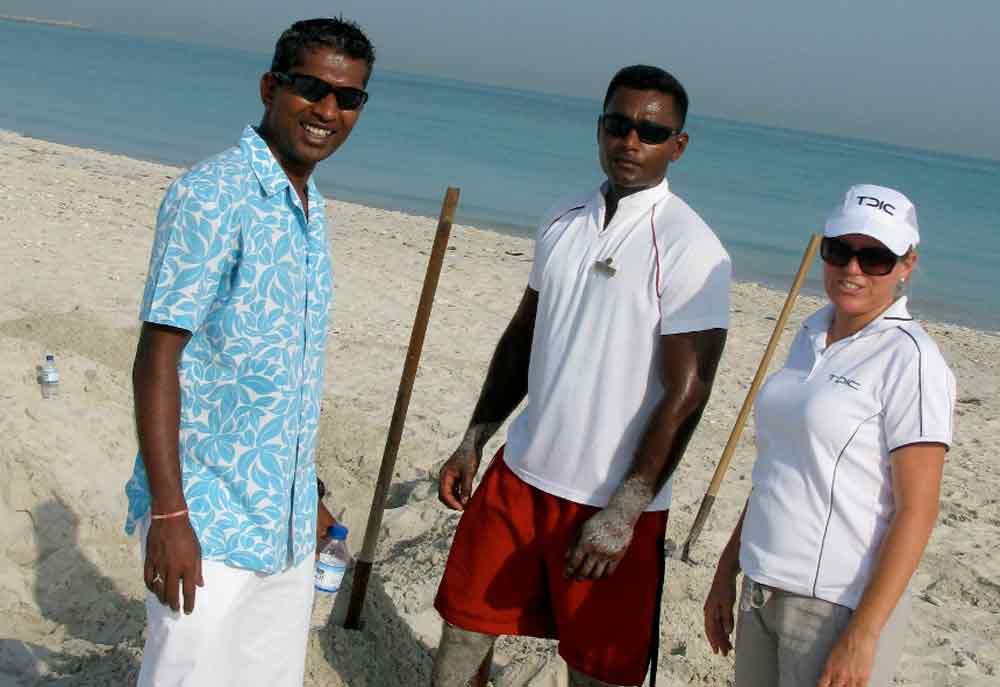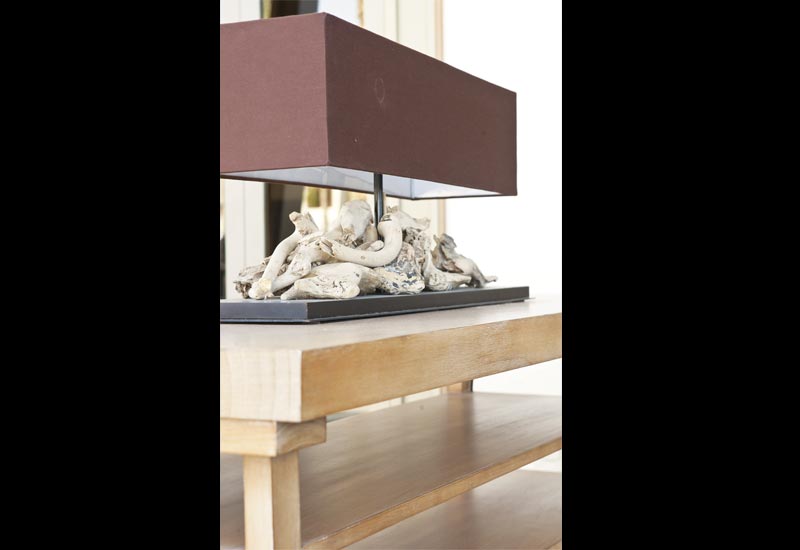 Shiva Kumar and St. Regis beach lifeguard Sunil Shetty, both from India, were the first to spot Saadiyat Island's first nest of the season had hatched.
Shiva Kumar and St. Regis beach lifeguard Sunil Shetty, both from India, were the first to spot Saadiyat Island's first nest of the season had hatched.
The first Hawksbill Sea Turtle nest has hatched on Abu Dhabi’s Saadiyat Island in the dune-conservation area fronting the St. Regis Saadiyat Island Resort Abu Dhabi.
The hatching of the endangered turtles was discovered by St. Regis beach staff who spotted baby turtle tracks leading from the Saadiyat Dune Protection Zone to the shore, and alerted the environment team of Tourism Development & Investment Company (TDIC) which monitors the turtles under its Hawksbill Sea Turtle Conservation Programme.

| Advertisement |
“We’ve been checking the beach first thing every morning since the nest was laid,” said Shiva Kumar, from the leisure and spa team for St. Regis Saadiyat Island Resort Abu Dhabi.
“TDIC gave us training on what to look out for and how to identify turtle tracks, and they told us that it took between 50 and 60 days for a turtle nest to hatch.”
Kumar and St. Regis beach lifeguard Sunil Shetty, both from India, were the first to spot Saadiyat Island’s first nest of the season had hatched.
“Shiva and I were conducting our routine morning beach check, and suddenly we came across hundreds of tiny turtle tracks making their way from the dune area to the shore,” explained Shetty. “It really makes you happy to see, we’ve been keeping an eye on the nest for the past two months and making sure it remained protected - so in a way we feel like those little turtles were part of the family.”
Kumar and Shetty assisted TDIC’s environment manager Millie Plowman to dig the nest up in the sand to enable a full inventory to be conducted, as part of the official monitoring programme which began early 2010 and has recorded 650 eggs successfully hatched on Saadiyat to date.
“We now have another 65 successful hatchings to add to our records,” said Plowman. “This is a fairly normal result for a nest of around 80-100 eggs, as some of the eggs don’t fully develop while in the nest.
“Once one egg hatches, the entire nest hatches and it’s quite a spectacular sight if you’re able to witness a brood of baby turtles popping their headsout of the sand after burrowing their way up from their underground nest.
"The baby turtles then make their way to the shore, orientingthemselves in the dark by the glow off the water. Once in the water the baby turtles swim for a full 24 hours to get as far away from the shore as possible, powered by the reserves of the egg yolk they’ve ingested. Then they just float amongst the currents to be taken out into deeper waters to mature," Plowman continued.
“We’re not really sure how they spend their time out in the deep seas, but we do know that female turtles return to the beach where they were born around 30 years later to nest.”
Hospitality partners operating on Saadiyat Beach have fully co-operated with TDIC’s Hawksbill Sea Turtle Conservation programme with many of their staff - including lifeguards, beach cleaners and beach security patrols - being fully trained by TDIC’s environment team to look for and report turtles and nests and how to manage the beach during the nesting season.
“Everyone has been enthusiastically involved with the programme since inception and have embraced the opportunity to be able to directly contribute to the conservation of Saadiyat’s environment and wildlife,” said John Pelling, general manager, The St. Regis Saadiyat Island Resort, Abu Dhabi.
“We have also worked hand-in-hand with TDIC to spread the word among our guests who have readily respected the beach access restrictions and shown great interest in learning more about the island’s conservation programmes,” he added.
TDIC’s Hawksbill Sea Turtle Conservation programme is the only one of its kind in the Arabian Gulf, and has seen the company restrict resort development on Saadiyat Beach to create a buffer zone serving as a physical barrier between construction and operations and the Saadiyat Dune Protection Zone nesting beach.
“It has been our aim to not only to maintain and protect existing environmental and social assets on Saadiyat Island, but to achieve enhancement of these for future Abu Dhabi generations,”said Denis O’Connor, executive director – operations, TDIC.
“Initiatives such as turtle and mangrove conservationand sustainability guidelines for construction and operations, have resulted in Saadiyat Island being recognised as a leading example of how large-scale investment projects can be delivered while enhancing and protecting the Gulf’s environment," he added.









 Search our database of more than 2,700 industry companies
Search our database of more than 2,700 industry companies









